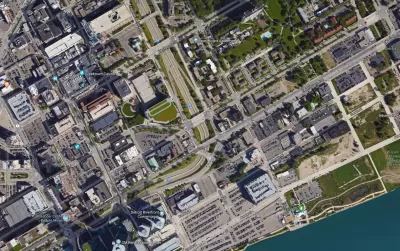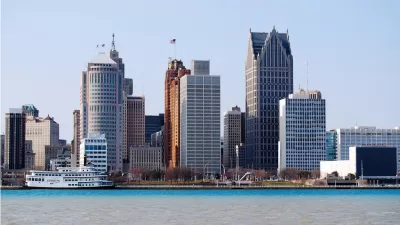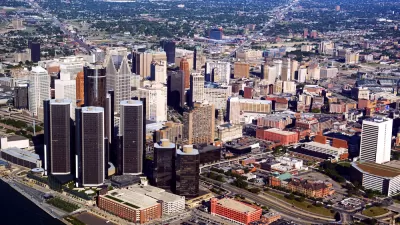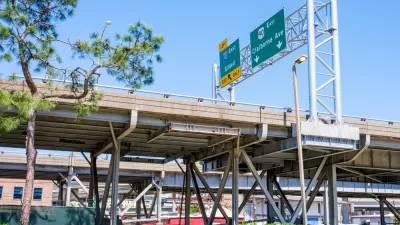Detroit will soon join the ranks of cities that have ripped out high-speed freeways from their urban core.

"After years of study and debate, the Michigan Department of Transportation is moving ahead with plans to rip out Detroit's I-375 expressway and restore a surface street there," reports John Gallagher.
"I-375 runs south from I-75 along the east side of downtown," adds Gallagher. "The creation of I-75 and I-375 a half-century ago destroyed the historic African-American neighborhood known as Black Bottom, an episode that remains a painful memory for many older black Detroiters."
The decision to remove I-375 began with discussions that began in 2013, also reported by John Gallagher and picked up by Planetizen at the time. MDOT is unlikely to start ripping pavement out until 2022, and the whole project is still dependent on funding and planning details. The article includes a rendering of the pedestrian sidewalks, bike lanes, and landscaped public space that will replace I-375 for a mile near the Detroit waterfront and some of its most iconic Downtown buildings.
FULL STORY: MDOT moving ahead with plan to rip out I-375 freeway, restore surface street

Trump Administration Could Effectively End Housing Voucher Program
Federal officials are eyeing major cuts to the Section 8 program that helps millions of low-income households pay rent.

Planetizen Federal Action Tracker
A weekly monitor of how Trump’s orders and actions are impacting planners and planning in America.

Ken Jennings Launches Transit Web Series
The Jeopardy champ wants you to ride public transit.

California Invests Additional $5M in Electric School Buses
The state wants to electrify all of its school bus fleets by 2035.

Austin Launches $2M Homelessness Prevention Fund
A new grant program from the city’s Homeless Strategy Office will fund rental assistance and supportive services.

Alabama School Forestry Initiative Brings Trees to Schoolyards
Trees can improve physical and mental health for students and commnity members.
Urban Design for Planners 1: Software Tools
This six-course series explores essential urban design concepts using open source software and equips planners with the tools they need to participate fully in the urban design process.
Planning for Universal Design
Learn the tools for implementing Universal Design in planning regulations.
Ada County Highway District
Clanton & Associates, Inc.
Jessamine County Fiscal Court
Institute for Housing and Urban Development Studies (IHS)
City of Grandview
Harvard GSD Executive Education
Toledo-Lucas County Plan Commissions
Salt Lake City
NYU Wagner Graduate School of Public Service





























